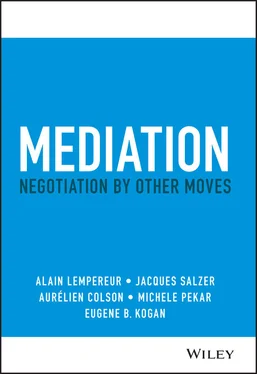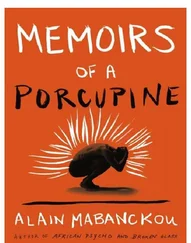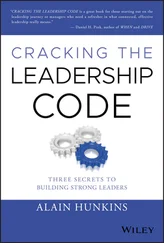helpful, whether you are a potential or a professional mediator, an involved party, a lawyer, an adviser, or a stakeholder;
practical (but not simplistic), as it offers operational principles; it raises real problems, and proposes concrete solutions;
subtle (but not abstruse), as it invites self‐awareness, persistent reflection, a capacity to review actions, and change course;
comprehensive, as it approaches mediation in general, as a process, in what is applicable to most types of mediation – diplomatic, family, criminal, consumer, labor, corporate, etc. – even if each domain has its specificities (Lempereur 1999b, 1999d);
specific, because it is a book that opens to every reader the possibility of choosing the moves and tools adapted to their needs, experience, and context – to build their own mediation path.
Writing this book is also a part of a broader objective that transcends the dimensions of a single book. It is about helping to reverse a paradoxical trend: Why is mediation still so little practiced around the world while its potential is so great? Although many organizations utilize third‐party facilitators, mediation remains a relatively little‐used mechanism compared with the plethora of cases in court. Maybe there is not yet, despite the advocacy efforts, enough accessible information on what, concretely, mediation offers: how is a decision made, what are its advantages and limits, how it unfolds, what are its phases, what is a mediator's role, what can the parties expect, etc.?
This is what this book proposes to share with the reader, so that more people, according to their circumstances, consider mediation a useful approach to overcome a conflict or even wish to become mediators themselves.
Chapter 1— The Perimetergives you an overview of existing mediation practices. What is the scope of mediation today? Whether they are informal, temporary, or institutional, or whatever their areas of action, mediators develop an increasing space in many sectors of life: personal, social, economic, administrative, and political. We paint a landscape of these activities, illustrating a wide variety of practices and models. This chapter highlights some variables of differentiation – before and during mediation – along with some guidelines for practice.
Faced with this diverse reality, Chapter 2explores the Pertinenceof mediation. What are its advantages and limits? In what situations should one choose mediation as a mode of action to resolve a conflict? Besides mediation, we present seven third‐party approaches that offer complementary wisdoms in the face of conflict. We also analyze two series of criteria that favor mediation: the first lists blockages that freeze the present; the second turns toward the potential of mediation for a renewed future among the parties.
What are some fundamental guidelines that mediators need to keep in mind to guarantee the quality of the process? Chapter 3examines seven Principlesof mediation: independence, neutrality, impartiality, fairness, confidentiality, respect for the law, and self‐determination of the parties. As we clarify these essential principles for practice, we also underscore possible tensions among them and how to address them. For example, how do we remain neutral while supporting the fairness of an agreement? How do we combine confidentiality and respect for the law?
Chapter 4considers the Preparationof mediation sessions, beginning with pre‐mediation. Whether one is a mediator, involved party, or adviser, we prepare the essential elements before mediation. How to propose, refuse, accept, or, if necessary, impose a mediation? How to choose mediators? What does a “contract to mediate” ahead of a session look like? Whom to convene for a mediation? How, concretely, to prepare as a party or as a mediator? What modes of intervention to choose? And how to arrange the place where mediation happens? There are many questions – strategic, operational, or simply practical – to prepare for.
As we contemplate a mediation session, Chapter 5lays out what we call the PORTAL, i.e. the introductory six initial moves to connect and to structure the mediation process:
Presentation: Establish contact between the parties and mediator.
Objectives of mediation: Clarify what mediation is and is not; what the mediator's role will be, and what the mediator expects from the parties.
Rules: Explain the guiding principles for the process, and obtain the agreement of the parties on them.
Time & Steps: Verify the availability of the parties, the calendar, and the completion date, and also outline the successive next phases in the mediation process.
Agreement: Check one last time that the parties have agreed to proceed as outlined.
Launch: Start the work on the conflict, the substance of the mediation.
The book then devotes two chapters to the methods that apply to the next phases in mediation. The first one concerns understanding the problems of the past, while the second seeks workable solutions for the future.
Problem‐solving in Chapter 6explores the Past Toward the Present.Before venturing to resolve a conflict, we need to explore its background. Inquiring, probing, and restating, as well as managing emotions, become indispensable tools to explore. This stage of the process involves three successive moves, which sometimes overlap:
1 Identify the Problems: Invite each party to tell their story of the conflict and raise their key requests.
2 Deepen Our Understanding of the Problems: Through deep probing and understanding of the respective narratives and positions, try to spot the underlying needs, motivations, or interests that are essential to each party.
3 Mutual Understanding: Work on reciprocal recognition of the causes of the conflict and of the current needs of the parties.
Problem‐solving in Chapter 7leads from the Present Toward the Future. Once mutual understanding of the root causes of the problems and of each other's needs has been reached, the mediation then focuses on how to build solutions and scenarios in the future to meet the needs identified in the present. Here, three successive moves are useful:
1 Invent Solutions: Brainstorm as many solutions as possible. How to come up with solutions for oneself and for the other in terms of quantity and quality? Here, the techniques of value creation and creativity will be presented, as well as possibilities for the mediator to suggest ideas.
2 Evaluate Solutions: Formulate justification criteria to filter solutions that might work for both parties.
3 Decide: If possible, summarize and formalize a reciprocal commitment, for which the next move is to ensure follow‐up.
The end of every mediation session focuses on the process of the next steps, and on the appreciation of people's engagement, whether they have reached agreement or not. US President Barack Obama used to say, “hard things are hard.” Successful mediation is no exception, and there will likely be numerous obstacles on the way. How to foresee and fix – or, at least, manage – them?
The final chapter, Chapter 8, explores potential Pitfalls,traps that the mediator needs to manage no matter how they emerged. Some mediators may have good intentions, but their instinctive behaviors can have negative, unintended consequences. We present probable causes of such behaviors and their risks, while suggesting practical approaches to avoid them. Other problems stem from the behaviors of one or both parties. Again, some of their moves, they believe, will serve their interests, but actually end up damaging the very process of mediation. Other challenges arise in spite of the parties' efforts. This chapter proposes methods for the mediator to overcome these critical moments in the interaction with the parties.
Читать дальше












